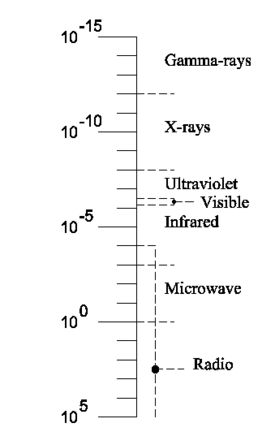Electromagnetic wave
In physics, an electromagnetic wave is a change, periodic in space and time, of an electric field E(r,t) and a magnetic field B(r,t). Examples of electromagnetic waves (in increasing wavelength) are: gamma rays, X-rays, ultraviolet light, visible light, infrared, microwaves, and radio waves. All these waves propagate with the same speed c, the speed of light.
In the figure we see a snapshot (i.e., a picture at a certain point in time) of the magnetic and electric fields in adjacent points of space. In each point, the vector E is perpendicular to the vector B. The wave propagates to the right, along an axis which we conveniently refer to as y-axis. Assume that the snapshot is taken at time t, then at a point y we see an arrow of certain length representing E(y,t). At a point in time Δt later, the same value of E (same arrow) is seen at y + c Δt. The arrow seems to have propagated to the right with a speed c.
If we focus on a fixed point y, then in progressing time we see the two vectors E(y,t) and B(y,t) grow to a maximum value, then shrink to zero, become negative, going to a minimum value, and grow again, passing through zero, and growing to maximum value. In other words, when we plot E and B in the fixed point y as a function of time t, we see the same sine-type function as in the figure.
External link
ISO 21348 Definitions of Solar Irradiance Spectral Categories
To be continued

